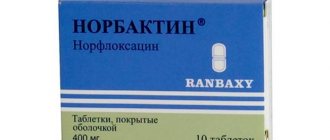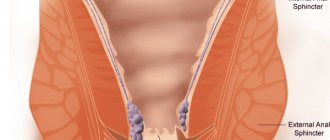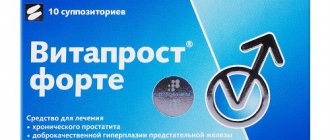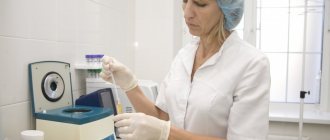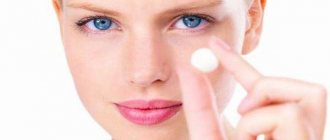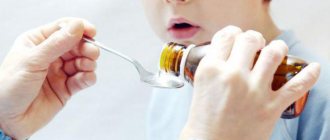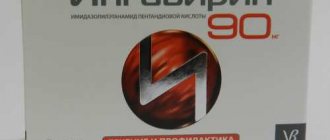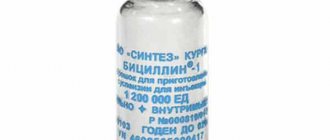Author of the article
Evgeniy Nikolaevich Konoplev
Reading time: 5 minutes
AA
Disorders of the musculoskeletal system are often accompanied by pain and significantly complicate the lives of patients. Currently, almost every pharmaceutical company offers a wide selection of drugs with analgesic effects. Various pharmacological forms help to quickly eliminate pain and improve the course of the pathological process. One of these products is Nise gel.
Main characteristics of Nise ointment
Nise ointment is an anti-inflammatory medicine that is available in the form of a cream for external use. The drug is a highly selective Cox-2 inhibitor and affects the site of inflammation. Nise is the main medicine for inflammatory lesions of muscles and joints for external use.
| Pharmacokinetics | Pharmacodynamics |
| The main component of the gel quickly penetrates the muscles and joints, the drug is practically not absorbed systemically and does not enter the bloodstream, the clinical effect of external use develops within a month from the start of use. Within 15 minutes of application, the drug reaches its maximum concentration in the inflamed tissue. | The active ingredient of the drug belongs to the class of sulfonamides and selectively inhibits the activity of a special enzyme - cyclooxygenase 2, which is responsible for the formation of biologically active prostaglandin compounds that enhance the inflammatory response, attract immune system cells responsible for inflammation to the site of the lesion, increase vascular permeability and increase pain. Suppression of this enzyme is achieved through the following effects:
|
The ointment is available in the form of a gel of 20 and 50 grams, available without a prescription. The production of the drug belongs to the Indian pharmaceutical company Dr. Reddy's Lab. Ltd. The manufacturer produces the medicine in convenient tubes, which should be stored at room temperature no higher than 24 degrees, out of reach of sunlight and children. The shelf life from the date of production is 2 years.
We recommend reading the article on how to choose an ointment for joints. From the article you will learn about the best ointments for joints with anti-inflammatory, warming and analgesic effects, and the benefits of using chondroprotectors. And here is more information about why to use ointment for a bruise.
Composition of the drug
The drug contains the active substance Nimesulide, which determines all the main effects of the ointment . It also includes additional components:
- menthol;
- thimerosal;
- water;
- potassium phosphate;
- flavoring;
- propylene glycol;
- isopropanol;
- trometamol;
- capsaicin;
- diethyl phthalate;
- diethylene glycol monoethyl ether;
- hydrogenated polyoxyl castor oil.
Mechanisms of action of Nimesulide
Menthol, thimerosal and capsaicin are the main components that determine the properties of the drug, the rest are auxiliary: they help create the smell, consistency and delivery of the drug inside.
Properties
The active substance exhibits the main property of reducing inflammation. Nimesulide also inhibits peroxidation at the site of injury, having an antioxidant effect. The affected joint or muscle under the influence of the drug decreases in volume, the temperature of the skin decreases under the influence of the substance, and normal metabolism is restored in the tissues of the joint due to the pharmacodynamic properties of nimesulide.
Other active components also participate in the action of the gel:
- thimerosal has antiseptic properties;
- menthol and capsaicin irritate the nerve endings in the affected area, which causes a decrease in pain and discomfort: the nervous system “switches” to another source of excitation.
Watch this video about the mechanism of action of the drug Nise, indications and contraindications for its use:
Chemical composition and release form
Indian manufacturer Dr. Reddy's Laboratories Ltd. produces 1% Nise gel in plastic tubes of 20 g and 50 g. The secondary packaging of the drug is a cardboard box with an attached annotation. In the anatomical-therapeutic-chemical (ATC) classification system (ATC) Nise gel is assigned the code M02AA . The average price of a 20 g package is 150 rubles, and a 50 g package is 250 rubles.
For long-term treatment of any pathologies, it is better to purchase a large package of Nise gel. This will help save money and time spent visiting the pharmacy.
Nise gel is characterized by a jelly-like consistency, light yellow color and the absence of foreign particles. The drug has a pleasant floral scent due to the flavor added by the manufacturer (Narcissus-938). In addition to the active ingredient nimesulide, the product for external use contains the following auxiliary components:
- potassium dihydrogen phosphate;
- N-methyl-2-pyrrolidone;
- distilled water;
- carbomer-940;
- propylene glycol;
- macrogol;
- thiomersal;
- isopropanol;
- butylated hydroxyanisole.
Auxiliary ingredients ensure easy absorption of the active substance into the skin and its delivery to bone, joint and cartilage tissues affected by inflammation. The medicine should be stored at room temperature, out of direct sunlight.
What does Nise ointment help with?
The anti-inflammatory effect and analgesic effect of the drug Nise ointment determines its use for:
- rheumatoid arthritis;
- psoriatic joint damage;
- Ankylosing spondylitis (ankylosing spondylitis);
- osteoarthritis;
- infectious arthritis;
- articular syndrome due to gout;
- rheumatic joint pain;
- traumatic effects on the joint;
- radiculopathies, plexopathies;
- tunnel syndromes;
- professional lesions of the musculoskeletal system (tennis elbow, etc.);
- tendonitis, bursitis, tenosynovitis and other inflammatory lesions of soft tissues;
- inflammatory muscle pain;
- pain in soft tissues after operations, during the rehabilitation period;
- arthralgia, lumbar ischialgia:
- pain when sprains and inflammation of ligaments;
- osteochondrosis.
Indications for the drug include almost all lesions of muscles and joints, since inflammation almost always develops. But it should be remembered that the medicine only removes the symptom; Nise does not treat the true cause of the pathological process.
Instructions for bruises
Instructions for use for bruises differ little from use for non-traumatic lesions: the gel should be rubbed into the skin several times a day for two to three weeks.
But it should be remembered that it is undesirable to apply it to an open wound surface, especially if there is discharge from the wound. In this case, the skin around it should be treated, and the wound itself can be smeared after the first signs of healing (soft scar or crust).
How to use Nise gel for sprains
For sprained ligaments, Nise gel should be applied externally along the affected formation 2-3 times a day for 14-20 days. One dose of the drug is a column of 3 centimeters. Ligaments play a connecting role between muscles and bones, so the gel should be applied along their entire length, capturing the attachment points. The gel is applied in a thin layer to a clean, dry surface. You need to let it absorb for a few minutes.
There is no need to rub the gel over the surface; Nimesulide does not enhance its effect, but such application impairs its absorption. Also, do not wash the application area for several hours. The gel has a viscous consistency and can leave marks on your hands.
Contraindications
Nise gel is safe to use and is almost not absorbed orally, however, like any medicine, it has contraindications:
- hypersensitivity to the main components and excipients;
- bronchial asthma or nasal polyps with hypersensitivity to salicylates;
- erosive or ulcerative lesions of the gastrointestinal tract;
- bleeding in the esophagus, stomach or intestines;
- decompensated liver damage;
- renal failure above stage 3;
- bleeding disorders;
- decompensation of cardiovascular failure;
- hyperkalemia;
- alcoholism;
- addiction;
- taking hepatotoxic drugs as indicated in people with liver damage together with the gel;
- age up to 12 years;
- pregnancy and lactation;
- rehabilitation period after coronary artery bypass surgery.
It is not advisable to apply or use with great caution the gel in the following situations:
- cardiac ischemia;
- damage to cerebral vessels;
- condition after a stroke or heart attack;
- diabetes;
- congestive cardiac intoxication;
- alcohol intoxication;
- inflammatory lesions of the gastrointestinal tract;
- active hepatitis of any etiology;
- elderly age;
- isolation of Helicobacter pylori from the body;
- peripheral vascular pathologies;
- blood diseases;
- long-term use of non-steroidal anti-inflammatory drugs.
Prescribe the drug with caution when used together with:
- anticoagulants;
- antiplatelet agents;
- glucocorticosteroids;
- antidepressants from the selective serotonin reuptake group.
Mechanism of action
To eliminate pain and relieve inflammation, Nise uses the same mechanism as other non-steroidal anti-inflammatory drugs: reducing the activity of cyclooxygenase-2 enzymes and, to a lesser extent, cyclooxygenase-1. As a result, the synthesis of active lipid substances decreases, platelet aggregation and histamine release decrease.
The described processes occur not only in the source of inflammation, but also spread along all paths of pain impulses.
In addition, Nise gel has the following capabilities:
- Additionally, “Nise” suppresses the production of extracellular protein compounds and hormone-like peptides.
- Local application of the gel not only eliminates pain and inflammation , but also helps stop the processes of destruction of cartilage and hard tissues ; a similar effect can be achieved by inhibiting the synthesis of urokinase and certain groups of cytokines synthesized by leukocytes.
- The possibility of active interaction of the substances included in the gel with glucocorticoid receptors helps stimulate their activity through phosphorylation, which also provides an anti-inflammatory effect.
- Suppression of the activity of enzymes in lysosomes of neutrophils and other heme-containing proteins gives the drug antioxidant properties, since after its use the amount of oxygen breakdown by-products that have a toxic effect on the body decreases.
Mechanism of action of NSAID drugs
Analogues of Nise gel
Nise gel has only 2 analogues registered in Russia:
- Nimulid in the form of a gel produced by the Indian company Panacea Biotec.
- Sulaydin of the Turkish Embil Pharmaceutical Co.
Nimulid Sulaydin
The drugs are complete analogues and have similar indications, contraindications and methods of using the gel.
Diclofenac and Ketorol gels and ointments are produced based on other anti-inflammatory substances.
Interaction with other substances
Nimesulide is capable of interacting with substances that actively bind to plasma proteins. For this reason, the use of Nise gel simultaneously with other pharmacological drugs, regardless of their form, should be agreed with the attending physician.
The risk of side effects or adverse reactions increases when taking the following medications:
- Anti-inflammatory non-steroidal drugs, regardless of the active substance included in their composition.
- Digoxin-based heart medications and phenytoin-based anticonvulsants.
- Drugs that contain lithium and drugs to lower blood pressure.
- Preparations based on methotrextate and other folic acid antagonists.
- Immunosuppressive drugs, especially those with high concentrations of cyclosporine.
- Antidiabetic drugs and diuretics.
Is it possible to use Nise gel during pregnancy and breastfeeding?
Nise gel cannot be used during pregnancy and breastfeeding, since the drug still penetrates into the blood and can have a negative systemic effect on the female body and child during such a sensitive period. The gel can lead to a decrease in the tone of the muscles of the uterus and contribute to increased blood loss during childbirth, and in the child it can cause premature closure of the Botallian duct, which threatens problems with the heart and blood circulation.
Will children under 2 years be allowed to use it?
Children under 2 years old should not use the drug. Nise is contraindicated due to possible systemic effects. But it is possible from 12 years of age in any form in age-appropriate dosages.
It is worth remembering that applying the gel can cause problems with hematopoiesis and the gastrointestinal tract in a child.
Can it be used if you have problems with the kidneys or liver?
Problems with the kidneys and liver cause disruption of the metabolism and excretion of the drug, so in case of severe pathologies the gel should not be used. If the dysfunction of the organs is not irreversible and does not interfere with their main role, the gel can be applied with caution.
It should not be used in cases of severe renal and liver failure, as well as cirrhosis of the liver or kidneys. Active inflammatory diseases are also a contraindication for the use of the gel.
Pharmacodynamics and pharmacokinetics
The ointment belongs to the anti-inflammatory painkillers from the sulfonamide class. Nimesulide has a local effect and reduces the concentration of pain mediators. When applied topically, it helps eliminate pain at rest and during movement, and reduces morning stiffness in joints. The maximum concentration of nimesulide after a single use is achieved by the end of the first day. Its value is 300 times greater than when using oral forms of nimesulide. When applying the gel, the concentration of the active substance in the systemic circulation is extremely low.
Side effects of Nise gel
Side effects of Nise gel include:
- skin irritations (redness, itching, peeling);
- heartburn, nausea, stool disorders;
- ulcerative defects of the gastrointestinal mucosa;
- headache, dizziness;
- urinary retention, blood in urine;
- decreased blood counts, anemia;
- decreased blood clotting;
- allergic reactions;
- edema syndrome;
- decreased iron levels in the body.
Symptoms appear with prolonged and uncontrolled use or with violation of contraindications for use. If all instructions are followed, skin redness or an allergic reaction to the substance may develop.
In case of overdose
In case of an overdose of the drug, the following symptoms are observed:
- nausea, vomiting;
- increased blood pressure;
- gastrointestinal bleeding;
- acute renal failure.
When using the gel, such symptoms rarely occur, however, slight discomfort with excessive use may bother the patient, especially with severe somatic pathologies. The gel should be discontinued immediately.
Contraindications
“Nise” is a safe drug and usually does not cause adverse reactions, but before using it you should make sure that there are no following contraindications:
- Individual intolerance to the active substance ; systematically occurring negative reaction to other non-steroidal anti-inflammatory drugs for topical use.
- Ulcerative lesions of the gastrointestinal tract in acute form; open bleeding in the digestive system.
- Infectious lesions and foci of purulent inflammation in the treated area, open wounds and other damage and violations of the integrity of the skin in the treated area.
- Diseases that impair the functioning of the liver and kidneys , in severe form.
- Children under 7 years of age.
Contraindications
Age over 65 years, diseases of the cardiovascular system, diabetes mellitus and a tendency to increase blood pressure are not direct contraindications for applying Nise, but require minimizing dosages and more careful use.
special instructions
Special instructions include:
- The gel should be applied to dry and intact skin; do not smear wounds, treat bandages or plasters at the affected area;
- After using the gel, you need to tightly close the tube cap and wash your hands thoroughly.
- The drug should not be prescribed together with medications that reduce blood clotting.
- Nimesulide may increase lithium levels when taken with lithium medications.
- When used with methotrexate, it enhances its undesirable effects.
- Strengthens the effect of cyclosporine on the excretory system.
- Reduces the effectiveness of Furosemide and antihypertensive drugs.
- With glucocorticosteroids increases the risk of bleeding in the gastrointestinal tract.
Instructions for use
To achieve relief, when using the ointment you need to follow the recommendations:
- the affected area should be washed and dried;
- the skin should be smooth, without cuts or rashes;
- one dose of gel - a three-centimeter column;
- apply the product to the most painful place;
- when spread evenly, rub in with massage movements;
- a similar procedure is repeated 3 or even 4 times a day;
- Duration of therapy is up to 2 weeks.
The ointment is not applied under dressings under which air does not flow. After use, wash your hands thoroughly.
You should be careful not to get the product on your mucous membranes or eyes, and in case of contact, rinse with water.
The medicinal product is stored in the refrigerator, since the temperature must be maintained from 0 to +25 degrees. After use, close the tube tightly.
Drug price
Gel in a 20 gram tube costs from 100 to 300 rubles. 50 grams of the drug will cost 200-400 rubles. The drug has different prices depending on the volume and pharmacy network.
We recommend reading about what Akriderm ointment is used for. From the article you will learn about the composition of the ointment, indications and contraindications for application, and how to use it. And here is more information about what ointment will help heal the wound.
Nise gel is an effective anti-inflammatory drug for external use and is used for various pathologies of the musculoskeletal system. The gel is applied to the affected surface, the course of treatment is on average 3-4 weeks. Nise successfully combats pain, swelling and other symptoms of inflammation, but does not treat its actual cause.
The gel has contraindications and restrictions for use despite external use and minimal oral absorption. Not recommended for pregnant women and children.
Indications for use
Due to the peculiarities of its effect, “Nise” is prescribed for the treatment of most mechanical injuries and diseases of the musculoskeletal system, accompanied by severe pain.
The main indications for the use of this remedy are given below:
- Inflammatory processes affecting the joints : gout in the acute stage, arthritis that occurs against the background of psoriasis.
- Damage and destruction of cartilage tissue, joint deformation accompanied by pain, ankylosing spondylitis.
- Injuries and damage to ligaments or tendons , accompanied by inflammation.
- Inflammatory lesions of the mucous membranes.
- Damage to the sciatic nerve, lumbago , pain in the lower back, damage to the roots of the spinal cord.
- Muscle pain, regardless of its origin.
- Inflammation of soft tissues caused by mechanical injuries.
Indications for use
Useful video
Watch this video about the effectiveness of Nise gel:
Similar articles
- Ointment for joints: which one to choose for pain relief...
How to choose the right ointment for joints, taking into account the existing problem. Which will help for recovery, pain relief of joints and cartilage. What will be the treatment for inflammation, pain relief. Effective ointments with pepper. Read more - Ointment for bruises: what can you apply, is it suitable...
How to properly use ointment for bruises, which is suitable during pregnancy, for a child. Is it possible to use Heparin, warming it up? Which fast-acting pain reliever for bruises and contusions should you choose? Read more
- Akriderm ointment: what diseases does it help with...
What is Akriderm ointment used for? Instructions for use, how to use for acne, thrush, hemorrhoids, burns, dermatitis. From what age can it be used? Analogs of drugs and their prices. Read more
- Acne ointment: which will help with inflammation,…
List of the best ointments for acne. Which ones really help for healing, for subcutaneous acne, inflammation. What hormonal ointment can I use? What gels will be an alternative? Read more
- Clotrimazole ointment: composition, what helps in women...
The main indications for the use of Clotrimazole ointment, for which it is also used in women, men, and children. Composition of the drug, instructions for use. What analogues of Clotrimazole are there, the price of the drug. Read more
- Scar ointment: which one is suitable for healing...
What is the most effective ointment for scars that will help better with scars. What drug promotes resorption and healing - Heparin ointment, Ichthyol, Anti-scar, Zinc, Solcoseryl and others. Read more
Directions for use and dosage
The gel is intended for external use. When treating pain syndromes, the drug must be used according to the official instructions. It is necessary to observe the frequency of use and the recommended dosage according to indications. The area to be applied should be washed with soap and water, and then the surface of the skin should be dried. The multiple dosage is no more than 3 cm of squeezed gel. Other recommendations for use:
- Nise is applied in a thin layer to the surface of the skin without rubbing.
- The frequency of use is 1 time every 8-12 hours, 2-3 times a day.
- The course of treatment is no more than 10 days.
Reviews
In pharmacies, analogues of Nise gel are widely available, the cost of which is much cheaper than the drug in question. But when choosing, it is necessary to take into account not only the price, but also the composition of the medicine. Many analogues have different mechanisms of action, and therefore the effect may differ, and the reviews presented below are the best confirmation of this.
Stas, 23 years old, Yaroslavl
I have been playing football since I was 7 years old and this gel has been in my backpack for 3 years now. Even if the ligaments or muscles are severely pulled, Nise restores them in literally 3-5 days. But it is better to consult a doctor, as he will be able to choose a suitable and at the same time safe remedy. Before that I used Bioran gel, it didn’t help at all. Its purchase was my own initiative and, as it turned out, wasted money.
Rustam, 43 years old, Perm
After relaxing in nature, I blew my neck. I bought Nise at the pharmacy and applied it 4 times, according to the instructions and recommended doses. There is no effect. Although, a red rash has now appeared on my neck, which never goes away, despite the fact that I no longer apply the gel.
Tamara, 55 years old, Yalta
This remedy helped me a lot - the joint pain went away after 3 days. I sit and rejoice like a little child. It is not pleasant to live with constant pain. It turns out that you can be healthy even after 50 years.
Read further:
Viferon ointment: instructions for use for children under one year of age, recommendations and reviews
Miramistin ointment (gel): detailed instructions for use, price in pharmacies, review of analogues and reviews
Permethrin ointment: instructions for use, composition, effectiveness for demodicosis, review of analogues and reviews
Benzyl benzoate - instructions for use of antiparasitic ointment, review and reviews
Boromenthol ointment: instructions for use, review and reviews
Nise gel (review) from RUB 172
Description
Anesthetic gel. Recommended for radiculitis, arthritis of various etiologies, myalgia, etc. Relieves pain from bruises and other injuries to the skin.
Overall
4
- Efficiency
- Price
- Safety
- Availability
Pros
- Wide range of applications
Cons
- Smell
- Effect
- Dyes clothes
- Price
